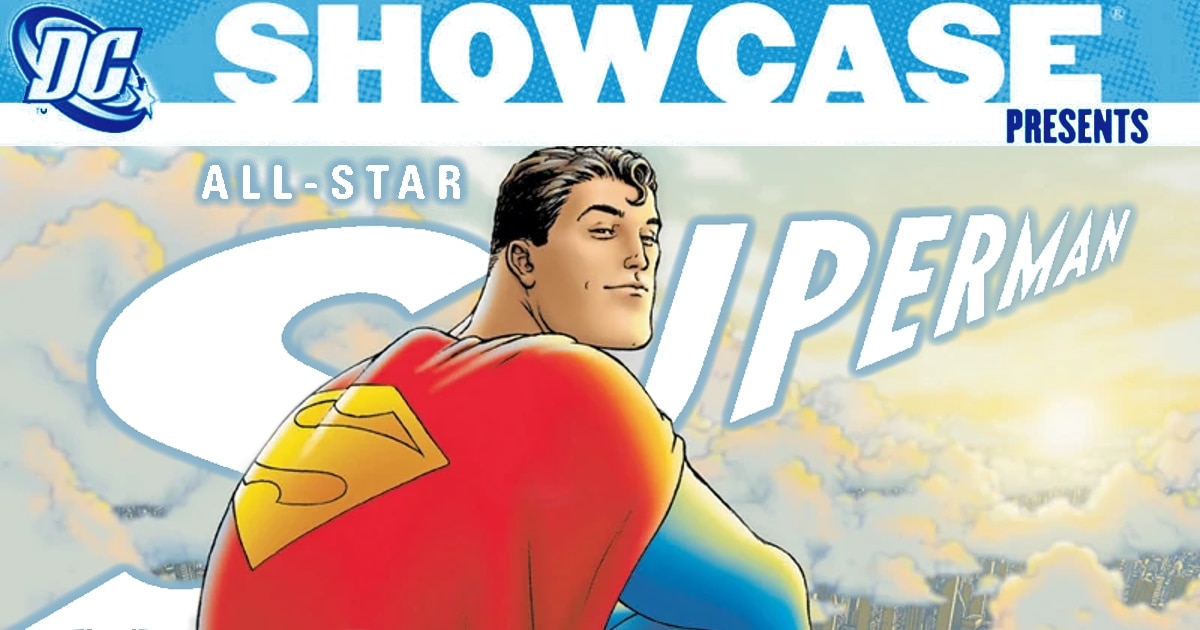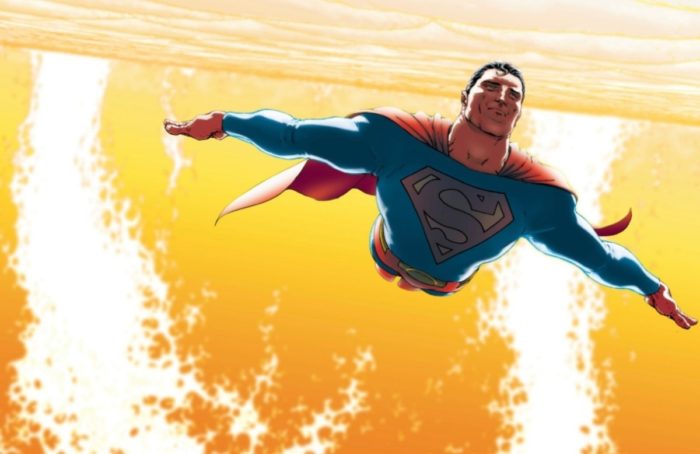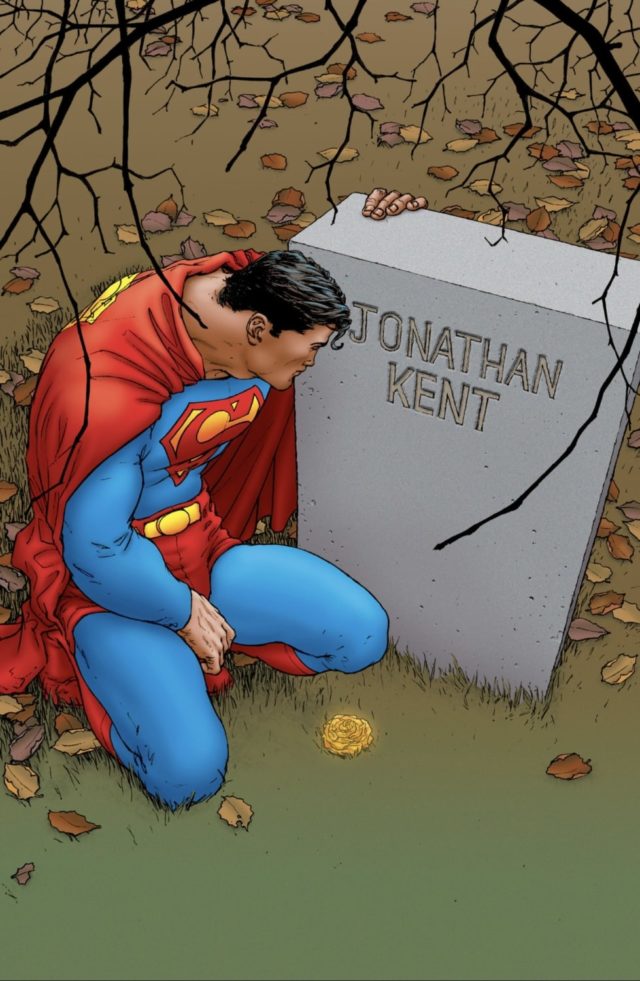DC Showcase: ‘All-Star Superman’ Comic Review

There are good stories, there are great stories, and then… there are All-Star stories; there is All-Star Superman.
Ever since its conclusion in 2008, All-Star Superman–the seminal work by Grant Morrison, Frank Quitely, and Jamie Grant–has cemented its legendary reputation within the comic book world. It’s a tale that, somehow, managed to not just live up to its already larger-than-life protagonist, but managed to raise Superman to even greater heights, and earned two Harvey Awards and three Eisners in the process.
All-Star Superman is such a perfect, powerful interpretation of Superman that it is the core inspiration for James Gunn’s Superman: Legacy movie coming in 2025. It’s a comic that perfectly balances the fanciful, limitless boundaries of the comic book medium with the deepest, most personal elements of the human experience. A book unlike any other–a love letter to comics, a perfect encapsulation of the Superman mythos, and an optimistic prayer for the future of humanity.
And I used to hate it.
[Warning: Some spoilers discussed for All-Star Superman below!]
My first reactions to All-Star Superman
When I first experienced All-Star Superman, I did it all wrong. Not only was I totally unfamiliar with comic books as a medium, but I did the dreaded thing that will make any bookworm squirm: I watched the movie first.
I saw the animated movie adaptation and nothing could have prepared me. I spent far too much time trying to figure out exactly how everything fits into the bigger DC Universe, trying to cram the narrative and unique characterizations into my limited, pre-existing DC knowledge.
It was a sobering experience that confused me. I mean, (SPOILER ALERT) Superman died. There was no Justice League, no Batman, just a bunch of random names and a barely-cohesive plot. It wasn’t an awful experience, but it was enough that when I returned to All-Star in its original medium… it still didn’t click.
It was–wacky! I would quickly learn that Grant Morrison had a knack for that: wild, high-concept stories that felt too poorly put together and rushed to make cohesive sense. As a beginner, most stories I’d found were fairly easy to follow, but Morrison just seemed to throw things at the audience to see what sticks. As someone who thought comics were all about continuity and power scales (I had been on the internet), I was confuddled.
I also outright hated the art style of Frank Quitely. Jamie Grant’s lively colors felt wasted on linework that was so rough and stylized. In my opinion, most popular comics from the ’00s had an aggressively off-putting, grimy sense of realism, but at least that felt “mature” in my young adult mind. I assumed that was the proper way comics should be drawn. After all, isn’t “realistic” the aim?
Yes, I was what is now clinically referred to as a “goober”.
But what made me turn around and re-evaluate my own views was actually Jay Babcock’s foreword to another Grant Morrison book: Final Crisis. At the time, I was struggling with Final Crisis in the same way that I’d been with All-Star Superman. I knew I was missing something. I knew I had to solve the puzzle! In that foreword, Jay Babcock handed me the missing piece.

He described reading a moment of pure cosmic absurdity in Final Crisis and just smiling and laughing. That was it. He goes on to revel in the imaginative, progressive, purely “WEIRD and GREAT and TRUE” ideas that the comic just—embraced. And he embraced them too. They are elements that comic books can do so well. There are places and stories that comics can go that no other medium can, and they’re meant to be creative, wild, and—above all else—fun.
I had approached comics wrong. I had come from such a logical, rigid standpoint that I truly think I lost what it felt like to be a child playing with action figures in my backyard, imagining wild and crazy adventures. When I tried it again—with that mentality in my heart—I discovered something crazy.
I started to love All-Star Superman.
The story of All-Star Superman
All-Star Superman is an out-of-continuity “Elseworlds” story set during the final days of Superman. After Lex Luthor’s ultimate plan works, Superman’s cells overcharge with solar radiation and start decaying beyond control. The Man of Steel is dying, but there are things left he needs to do.
Although it’s the inciting incident and the ultimate climax of the story, All-Star Superman is not a story about Superman’s death. It is a celebration of his life and his boundless love—for Lois Lane, for his family and friends, but, above all, for his adopted home.
Each chapter goes in new, exciting directions, pulling some of the most inventive scenarios showcasing Superman’s “Final 12 Labors of Heroism”. It pits him against classic foes like Parasite and Bizarro, but also against original characters like Solaris the Tyrant Sun.
The story works both as a complete whole and as twelve individual stories, with each issue spinning a standalone story in compelling and utterly imaginative ways. It’s here that the creative team pulls off a few “heroic labors” of their own.
What this comic series reveals about Superman
There’s a dichotomy to Superman, hidden in plain sight, that many writers ignore. Writers tend to approach Superman in one of two ways: they either make him bigger than life (see Superman: Up in the Sky) or bring him down to earth (see The Warworld Saga). Now, these are both solid Superman stories, but writers tend to always lean one way, to either the “Super” or the “Man”.
In Superman Smashes the Klan, we get a very grounded Superman in a literal and metaphorical sense. A younger man, his main struggle revolves around both internal and external acceptance. As a result, one of his most defining powers, flight, has to be earned through his personal character growth.
Compare that to Superman: Unchained which highlights the raw, unyielding might of this god among men, and you have a very different story. Finding the harmony between “Super” or “Man” without sacrificing either is EXACTLY what All-Star Superman does so well.
Morrison powered up Superman more than ever before. From the very beginning, All-Star is a story where that can happen. Issue #1 sets the stakes: Superman is dying. Nothing will stop that, it’s only a matter of “when”. This allows for several storytelling advantages. If the stakes are not related to the power-scaling of our protagonist, if his powers will not save him, then they can be whatever they want to be without issue. When justifying power-scaling becomes obsolete, the focus can shift to more creative avenues like the heartfelt resonance of characters like Jimmy Olsen, Lois Lane, and even Clark Kent himself.

Every issue maintains this perfect balancing act. Take issue #6, for example. A multidimensional time-eater attacks Smallville! It’s here to devour everyone’s futures, and only Superman and his time-traveling descendants can stop it! A plot ripped RIGHT out of the silver age, just dripping with abstract sci-fi deliciousness — but it’s a distraction. The heart of the story is a boy, his dad, and the fact that no one escapes death. No beat feels out of place, no emotion or wonder is lost. It’s the perfect response to the age-old question:
“If Superman truly is the modern-day Atlas, then how can he be relatable?”
Simple. Remember that the modern-day Atlas grew up in Kansas.
The art of All-Star Superman
Frank Quitely’s linework is unusual compared to standard comic fare, and may be polarizing, but hear me out: The art is what makes this comic work.
Jamie Grant’s colors pop and shine in a way that, in the 2000s, would have seemed totally alien to most comics fans. Put together, Quitely and Grant’s art makes this comic feel almost anachronistic, like DC pulled it right out of the 50s when sci-fi artwork was all ray guns and fishbowl helmets. Grant really is the unsung hero of this story. He built its identity.
It should be hard to take characters that have existed for 75 years and make them unique, yet Quitely effortlessly made these characters his own. He purely excels at building character and framing action. A sign of a good artist is when they make the writer feel obsolete, and there is so much silent storytelling in this book that is easy to miss.

Every character Quitely builds is a masterclass in subtlety, from Lex Luthor purposefully being someone who always has to look up at Clark Kent, to the difference in stature between Clark and his alter-ego. There are so many emotional beats in this story that would not have worked if the art failed. When making a comic, writing is just words. Art brings those words to life. Quitely tells us exactly how to feel.
The best example I can give for this is in the first two pages of this book. There are only eight words on the first page and none on the second. It is the best opening to any comic I can remember. No introduction required.
Why All-Star Superman is a must-read
Some people hate Superman. They hate the idea of Superman, the enormity of Superman. Superman has always struggled to find a footing in a way that characters like Batman haven’t, and it’s because Superman is meant to be the physical embodiment of an ideal.
“Truth, Justice, and the American Way.”
But ideals are incomprehensibly massive. Intangible. Perhaps this is why Superman’s most iconic power is his ability to fly, to rise above it all.
To stay forever out of reach.

This makes Lex Luthor, in this book and forever, Superman’s perfect foil. Lex is how we look at Superman. It’s easy to feel unworthy of an ideal, to feel judged when we fall short, to have Superman looking “down” at us. No one wants to admit they’ve fallen short, and that can foster resentment. Resentment is selfish. It’s the inability to see past ourselves and grow by admitting our mistakes.
Lex Luthor is the epitome of selfishness. In one of the most quotable lines in all of All-Star Superman, Lex receives a taste of Superman’s power and, when it runs out due to his own selfish negligence, he proclaims that Superman is the reason he failed to save the world.
Superman responds, “You could have saved the world years ago had it truly mattered to you.” This is what Superman represents for this entire story, and what he’s represented since his creation.

Even on a balanced, physical playing field, the Man of Steel triumphs. Not by any feat of strength, but by a feat of character. Where Luthor has always been a caricature of man’s selfish ambition masquerading behind the guise of capitalistic altruism, Superman has always risen above. Flight is not just Superman’s most enviable power. It’s an analogy for the ideology Superman represents as something not unreachable, but aspirational.
If you have ever thought that Superman was boring, then I cannot implore you enough.
Read this book.
Final thoughts on All-Star Superman
“You will give the people of Earth an ideal to strive towards,” Jor-El says in the 2013 film Man of Steel. The speech was adapted from this very comic, where he would continue, “They will race, and stumble, and fall and crawl…and curse…and finally…they will join you in the sun.”
To me, this line is the truest thesis for Superman. It’s why the character endures, and why All-Star is so important. It’s the line that continues to give me hope for his future, in any medium.
Superman is both super and man: a literary metaphor for all that humanity could ever aspire to. It’s the reason I love Superman. Not because his powers are cool, or because his heart is like mine…
We should care about Superman because Superman cares about us.

One of the most important, yet easily dismissed, core tenets of Superman is that he is our hope. Our optimism. Our strength of resolve and compassion. Throughout All-Star Superman, the most emotional beats come when we, the reader, see that this man is dying, but time again his thoughts are with humanity first and himself second. The idea of Superman is the complete rejection that absolute power corrupts absolutely.
All-Star Superman is and will forever remain a seminal work in the long and storied history of Superman. With this as a basis, Superman: Legacy has the potential to embrace not just the heart of Superman, but the innate beauty and child-like wonder of comic books. This brings me hope. I want to see a Superman on the screen who is unafraid to be what he is, and I truly believe audiences will fall in love with this character all over again.
We’ll believe we can fly.
[Note: This review was written by Guest Writer Carol Anne Brennaman]
Have you read All-Star Superman before? Are you excited about Superman: Legacy? Let us know on Twitter @MyCosmicCircus and be sure to follow the site for more DC comics reviews coming soon!
Check out our full list of DC Showcases here, including our review of Supergirl: Woman of Tomorrow!



